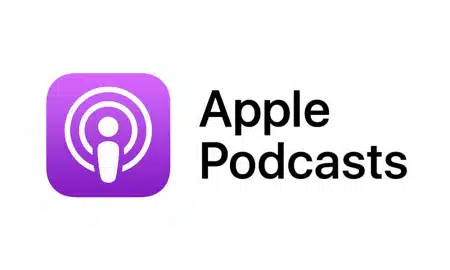The recent Broadcast2Post podcast, presented by Key Code Media, was a deep dive into SMPTE 2110 and its critical role in live production. Here’s a concise recap of the key takeaways.
The Key Code Media team has dedicated the past several months to assisting major TV stations in upgrading from baseband to the IP-based SMPTE ST 2110 standard. Our team invested countless hours in analyzing camera systems, multiviewers, video switchers, graphics, gateways, and orchestration products. Additionally, our engineers meticulously examined cable runs for 12G, 3G, and SMPTE 2110, along with estimating the hours required for equipment integration, testing, commissioning, and staff training.
Our findings were quite surprising. The total cost of ownership for a complete SMPTE ST 2110 facility proved to be not only cheaper than a 12G setup but also more cost-effective than building a 3G facility today. This discovery prompted us to assemble a team of experts to delve into two important questions:
- Is SMPTE 2110 genuinely expensive, or is it just a myth?
- What insights have engineers gained from deploying SMPTE ST 2110?
In this episode of the Broadcast2Post podcast, we immerse ourselves in the dynamic world of SMPTE 2110 and its pivotal role in live production. Our panel of SMPTE 2110 experts addresses the pressing challenges faced by teams venturing into IP-based workflows. Additionally, we have prepared a separate Inputs/Outputs explainer video that delves into the costs associated with deploying SMPTE 2110 – more on that below.
The State of SMPTE ST 2110 for Live Production
As with most new technology adoption in our industry, it takes time. Vendors need time to release SMPTE 2110-ready products, early adopters need time to test, adopt, and validate their functionality, and manufacturers need time to bring down the initial high “sticker price” as components become more widely available.
In recent years, technology vendors have made significant progress. Native SMPTE ST 2110 products are now available for various components such as camera systems, PTZ cameras, video switchers, multiviewers, routers, and gateways that connect with legacy baseband infrastructure. The standard is expanding into new applications, including post-production, houses of worship, and other non-traditional environments.
Organizations like JT-NM and VSF actively test the interoperability of participating SMPTE ST 2110 product lines, including Ross Video, Panasonic, Riedel Communications, Evertz, LAWO, Grass Valley, EVS, Arista Networks, and others. Their results and recommendations play a significant role, as not all 2110 products seamlessly integrate with each other or with legacy infrastructure.
But it’s important to acknowledge that training resources are still needed for broadcast engineers to understand the fundamentals of IT and IP-based networking. Fortunately, partners like Arista Networks are introducing new certification programs like ACE to assist with this.
The initial cost of a single piece of SMPTE ST 2110 infrastructure can still be high, sometimes exceeding 30-50%. However, costs are gradually decreasing year by year, and the hidden savings of transitioning to an IP-based infrastructure will make sense in the long run. More on that below.
Is SMPTE ST 2110 Too Expensive? Not Really.
Let’s take a fresh perspective on SMPTE ST 2110! When we talk to a room full of TV engineers, we often hear the same refrain – adopting 2110 is just too expensive. But what if it’s not?
Our team recently assisted a major TV station in its first rebuild in 13 years. They were moving to a new location with three full studios, a DIY set, multi-format streaming, and eight edit bays. The challenge was transitioning from 720p to 1080p with HDR capabilities at launch and future-proofing for 4K.
Our analysis revealed that if a facility is looking to upgrade at least 30% of its infrastructure to 2110, the solution could cost 40-50% more than a 12G/3G upgrade. In the short term, 2110 might indeed seem more expensive in this scenario. However, when you reach the 60-70% threshold of converting to a new 2110 infrastructure solution, you hit a break-even point. In many cases, the 2110 solution ends up being equal to or even less costly than a baseband infrastructure.
While we understand that most facilities might not be upgrading 60-70% of their infrastructure to 2110 right now, it’s worth considering how many upgrades it would take to reach that point. Would it be 2-3 upgrades? 1 year? 5 years? 10 years? This is your break-even point. Knowing that, at some juncture, 2110 will make financial sense might lead your team to reconsider whether it makes sense to invest in new 12G baseband cable runs or if 2110 fiber makes more sense for the next upgrade.
The cost savings from transitioning to SMPTE ST 2110 come from five key areas:
- Core Routing / Infrastructure: Your router is no longer limited by the cross-point capabilities of an SDI router and can leverage the incredible scalability of an IP network routing infrastructure.
- Conversion and Processing: You no longer require dedicated cross-points on the router for conversion and processing; you can simply use multicast to achieve your desired results.
- Multiviewers: The demand for multiview feeds has surged, and each of these feeds typically requires a cross-point on a traditional router and unique processing heads. However, with multicast and COTS hardware, you can significantly reduce costs while adding scalability and expandability to the multiviewer system.
- Audio: SMPTE 2110 allows audio to remain in-band and in-time with video signals, reducing the need for additional processing elements in the signal chain.
- Cable Infrastructure and Installation Integration Services: Costs drop dramatically, especially in green-field installs, where it’s more cost-effective and easier to pull a large number of fibers than multiple strands of 16-94A coax or other signal cable types.
Defining SMPTE ST 2110 For Live Production
The SMPTE ST 2110 is an IP-video standard that helps deliver uncompressed video and audio streams over a network. The suite breakdown into a few components:
- SMPTE ST 2110-10 (System Timing): This part of the standard specifies the system timing and synchronization aspects of ST 2110. It defines how video, audio, and data streams are synchronized and timed within the IP-based network to ensure accurate and consistent media playback,
- SMPTE ST 2110-20 (Uncompressed Video): ST 2110-20 deals with the transport of uncompressed video signals over IP networks. It defines the video essence streams, including video format and timing parameters, for use in professional media production.
- SMPTE ST 2110-30 (PCM Digital Audio): ST 2110-30 covers the transport of pulse-code modulation (PCM) digital audio over IP networks. It specifies the audio essence streams, including channel layout, sample rates, and bit depths, to ensure high-quality audio transport.
- SMPTE ST 2110-40 (ANC Data): This part focuses on the transport of ancillary data, such as closed captions, subtitles, and timecode, over IP networks. It defines how this additional data is encapsulated and transmitted alongside video and audio streams.
- SMPTE ST 2110-50 (Interoperability): ST 2110-50 addresses interoperability aspects, helping to ensure that different equipment and systems from various manufacturers can work together effectively when implementing the ST 2110 suite. It defines the use of common video and audio formats and provides guidelines for seamless integration.
- SMPTE ST 2110-21 (Traffic Shaping and Delivery Timing for Video over IP): This part specifies methods for shaping the network traffic to meet the timing requirements of video streams. It helps in ensuring that video packets are delivered with the proper timing and sequence to prevent issues like jitter and packet loss.
- SMPTE ST 2110-22 (SDI Transport of ST 2110 Signals): ST 2110-22 defines a method for encapsulating ST 2110 media flows into Serial Digital Interface (SDI) signals, making it possible to bridge between traditional SDI and ST 2110 networks.
- SMPTE ST 2110-23 (Uncompressed Active Parallel Video): ST 2110-23 specifies the transport of uncompressed active parallel video signals over IP networks. This is an alternative to ST 2110-20 for video transport.
- SMPTE ST 2110-31 (PCM Digital Audio for Broadcast Production): ST 2110-31 is an extension of ST 2110-30, specifically focused on PCM digital audio for broadcast production applications.
These standards work together to provide a comprehensive framework for the transport of video, audio, and ancillary data in professional media production environments using IP-based networks. They play a critical role in the transition from traditional baseband video and audio infrastructures to IP-based workflows in the broadcasting and professional media industries.





